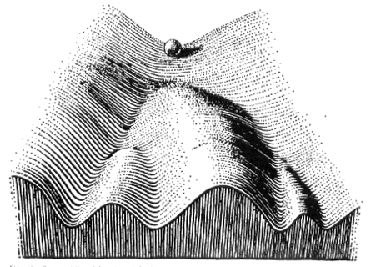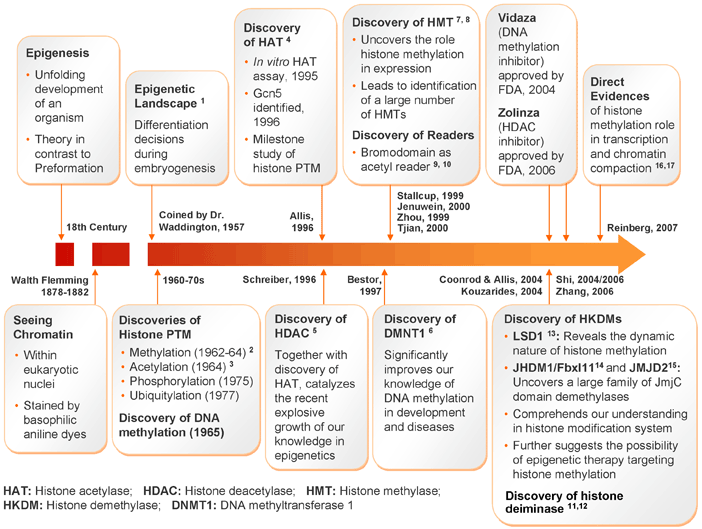Epigenetics At A Glance
An embroyologist and geneticist from the 1930's to 1950's, is most famous for his concept of "epigenetic landscape". His concept claims that cells' "fates" were established during its developments. He defined epigenetics as "the branch of biology which studies the casual interactions between genes and their products, which brings the phenotype into being". (1)
Conrad Hal Waddington
This painting by John Piper shows Waddington's concept for epigenetic landscape (1). The cell, represented as a ball in this pictures, shows all the paths possible in the ball's direction and that once the path is chosen, it cannot be reversed along with the effects it has on the ball.
The History of Epigenetics
Dr. Lars Olov Bygren
Dr. Lars Olov Bygren, his son, and grandson
In the 1980s, Dr. Lars Olov Bygern started his research on the long term effects of the hard years of Norbotten, Sweden during the 18th century. At the time, Norbotten was dealing with crop failure and a land spill, affecting the amount of food the small population living there received. Dr. Bygren took ninety-nine random individuals living in the Overkalix part of Norbotten and compared their health to how much food their parents and grandparents ate (based on agricultural records).
From this experiment, Dr. Bygren came to the conclusion that the grandkids of Overkalix boys who over ate during the time period of crop failure died on an average six years earlier than the grandsons of the Overkalix boys who barely ate. With this information, he had found a way to prove that epigenetic hereditary does take place in humans. (16)
Professor Marcus Pembry
In the 1980s, Professor Pembry was Head of the Clinical Genetics department at Ormond Street hospital in London. Often presented with cases of families who showed genetic inheritance patterns, he soon discovered that two very different diseases were caused by the same genetic alteration. Both Angelman Syndrome and Prader-Willi Syndrome were caused by a deletion of chromosome 15. He then discovered that the parent from whom the mutation was inherited from determined which disease the patient had. If it was inherited from the mother, the patient would have Angelman Syndrome. And if inherited from the father, the patient would have Prader-Willi Syndrome. This led to the conclusion that the chromosome had already knew its origin and therefore had been tagged or imprinted in some way. This idea later on became known as genomic imprinting. (25)
Professor Reik
Professor Reik helped discover the control process of epigenetics. From his earlier experiments, he concluded that a mouse embryo cultured would lead to the turning off of genes, he decided to test this to see if he could get the same conclusion with human embryos. In this experiment, he discovered that Beckwith-Wiederman syndrome occurred more often invitro fertilisation children than natural births. This experiment helped prove Reik's belief that enviromental changes could result in an epigenetic alteration. (25)
A Brief Timeline of Discoveries and Advances Made in Epigenetics
Professor Rachel Yehuda and Jonathan Seckl
Professor Rachel Yehuda and Professor Jonathan Seckl, both interested in the idea of altered genes being able to be transmitted nongenetically decided to take on an experiement to prove that an enviromental change or factor could imprint imprint inheritable changes on DNA. Previously, Seckl's work on pregnant rats had concluded that exposure to stress hormones resulted in an increase of those hormones to their offspring, which was also passed down to the next couple of generations. After the September 11 terrorist attack in 2001, Yehuda and Seckl decided to base their experiment on the levels of cortisol in pregnant women impacted by this event. Cortisol is a stress hormone which affects how a person responds to stress. Low levels of cortisol are associated not only with difficulties in coping with stress but may also result in post traumatic stress disorder (PTSD). It was found that pregnant women in their last semester of pregnancy during the September terrorist attack who suffered with PTSD all had low levels of cortisol. These women's kids too also had lower than normal levels of cortisol. (25)







